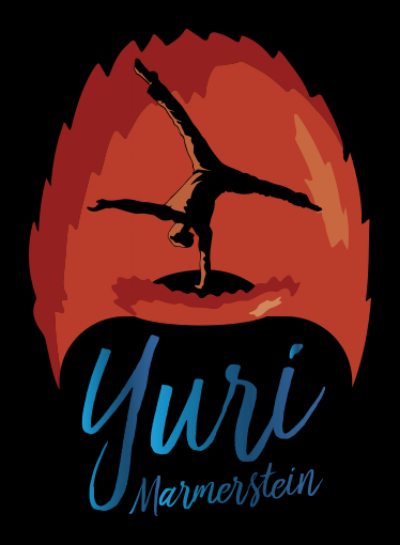Today's topic is something that does not get discussed often enough. Look around and there is a plethora of of coaches and teachers who can give a logical progression for physical training of a skill(like the handstand). The formula is simple enough without too much deviation from progression to progression.
What if I told you that the hindrances that stop people from learning how to handstand mostly do not come from the physical body? Sure, adults come with lots of mobility and strength issues, but all the stretching and strengthening in the world will still not get them a handstand.
Why? The mind acts as the barrier and limiter for the body. If the psychological situation is not addressed first, it will constantly limit your physical abilities. This is why I can take people afraid to do a handstand and have them balancing on their own in a short time. This is why I can take people who claim to not be able to open their shoulders and put them in an open shoulder handstand within seconds. This is why my friend and flexibility expert Kit Laughlin can get people into ranges of movement they thought they didn't even have.
In my experience it is rarely an actual physical limitation that actually holds people back.
So how do we approach training for hand balancing in this fashion? Firstly, there are a couple concepts to remember. Your subconscious will always resist change, discomfort, and difficulty. Any time you put your body in a situation it has never been in, panic sets in and your body will attempt to get itself out of danger as fast as possible. This concept applies in a lot more realms than simply handstands, but I will try to stay on topic.
The goal for a handstand is to never feel like your body is in danger. There are a couple ideas that are essential for this
1. Have an exit strategy. One of the first things I teach is how to fall, and for most people it takes only a few repetitions to recognize how to safely bail. If you don't understand how to fall safely, you will constantly be afraid of going over too far which will result in the compensation of never going far enough. As an adult, you need to specifically feel what it's like to be off balance past the point of control, and what it's like to react to it to get your feet back on the floor safely. The important element is to go from a point of control to a loss of control; some people like to anticipate falling and start to bail out before ever feeling the control.
2. Get comfortable. Scale the skill down as much as needed, but until a level of comfort is achieved it is useless to move on. Being comfortable in a handstand means you make it look easy. It means you can breathe easily, hold it as long as you want and come down intentionally. Remember that the handstand is a RESTING POSITION. I have worked with many who view it as a strength movement. They bent at their elbows, go into power breathing, etc. Typically these folk do not hold the position very long, nor do they exit with grace.
I literally give lectures in a handstand during my classes and workshops. It's just standing; having a conversation in handstand should not be a problem.
This is one concept people have a hard time learning. You think the basic handstand is the final goal? Trust me, it's only the gateway. It opens up doors to movement you didn't previously have as now your hands and feel become interchangeable.
Unfortunately, hand balancing only gets more complex after the base has been achieved. This is why it's so important to have that resting position to return to.
The last issue I want to address is in the case of free balance. Most people never feel what it is to be directly over their hands. The reaction to this is either blindly kicking up and missing or a fear based reaction where the body pushes the weight back to where it came from long before there is a chance of catching the balance.
To be on balance is a very fine point, but how do you expect to be able to hold a handstand without ever feeling what it's like for your body to be aligned? Handstands don't magically balance themselves, you have to feel in your body what is happening. In many cases, to be on balance is to be further forward onto the hands than what most people allow themselves to experience. Keep this in mind; the control is all within your own body.
Happy Balancing!

